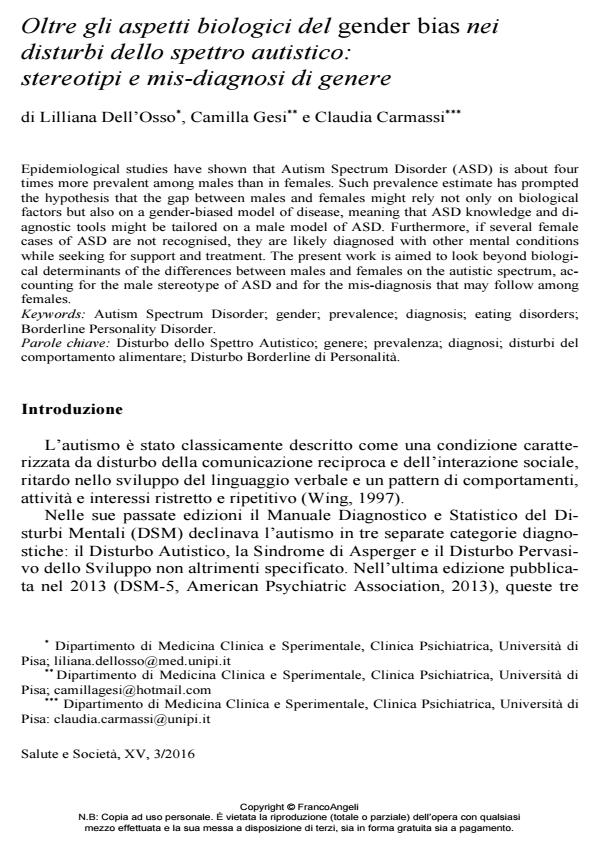Oltre gli aspetti biologici del gender bias nei disturbi dello spettro autistico: stereotipi e mis-diagnosi di genere
Titolo Rivista SALUTE E SOCIETÀ
Autori/Curatori Liliana Dell'Osso, Camilla Gesi, Claudia Carmassi
Anno di pubblicazione 2016 Fascicolo 2016/3
Lingua Italiano Numero pagine 12 P. 112-123 Dimensione file 85 KB
DOI 10.3280/SES2016-003009
Il DOI è il codice a barre della proprietà intellettuale: per saperne di più
clicca qui
Qui sotto puoi vedere in anteprima la prima pagina di questo articolo.
Se questo articolo ti interessa, lo puoi acquistare (e scaricare in formato pdf) seguendo le facili indicazioni per acquistare il download credit. Acquista Download Credits per scaricare questo Articolo in formato PDF

FrancoAngeli è membro della Publishers International Linking Association, Inc (PILA)associazione indipendente e non profit per facilitare (attraverso i servizi tecnologici implementati da CrossRef.org) l’accesso degli studiosi ai contenuti digitali nelle pubblicazioni professionali e scientifiche
Epidemiological studies have shown that Autism Spectrum Disorder (ASD) is about four times more prevalent among males than in females. Such prevalence estimate has prompted the hypothesis that the gap between males and females might rely not only on biological factors but also on a gender-biased model of disease, meaning that ASD knowledge and diagnostic tools might be tailored on a male model of ASD. Furthermore, if several female cases of ASD are not recognised, they are likely diagnosed with other mental conditions while seeking for support and treatment. The present work is aimed to look beyond biological determinants of the differences between males and females on the autistic spectrum, accounting for the male stereotype of ASD and for the mis-diagnosis that may follow among females.
Parole chiave:Disturbo dello Spettro Autistico; genere; prevalenza; diagnosi; disturbi del comportamento alimentare; Disturbo Borderline di Personalità
Liliana Dell'Osso, Camilla Gesi, Claudia Carmassi, Oltre gli aspetti biologici del gender bias nei disturbi dello spettro autistico: stereotipi e mis-diagnosi di genere in "SALUTE E SOCIETÀ" 3/2016, pp 112-123, DOI: 10.3280/SES2016-003009